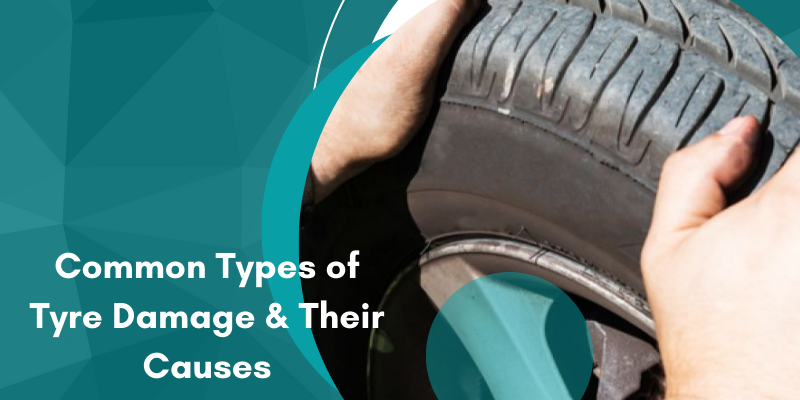As responsible car owners, it’s crucial to be aware of any potential issues that can compromise the integrity of our car tyres. Tyre damage can occur for various reasons, some of which may not be immediately noticeable. Driving on damaged tyres can be unsafe and reduce your vehicle’s performance. To help you prevent such situations, we have compiled a comprehensive guide to common types of tyre damage, their causes, and steps you can take to minimise the risk.
Types of Tyre Damage to Watch Out For:
Cuts & Punctures
Cuts and punctures are typically caused by sharp objects on the road. Poor road conditions with jagged potholes or encountering sharp objects like glass or stones can lead to cuts. Punctures can result from glass, screws, or nails. Drive cautiously around construction areas to minimise the risk of encountering debris. If you notice a puncture, promptly take your vehicle to a service centre for repair or replacement.
Impact Bulge or Break
An impact bulge occurs when the tyre sustains sudden impact with a solid object, causing the cords within the tyre carcass to rupture. It leads to an egg-shaped bulge on the tyre’s surface. If you continue driving on a bulged tyre, it can eventually break, causing a sudden deflation. Avoid striking curbs or speed bumps at high speeds, and drive slowly over such obstacles to prevent impact damage.
Uneven Tread Wear
Irregular tread wear occurs gradually and may go unnoticed until the tyre is severely compromised. The type of tread wear can indicate the cause and preventive measures. Here are some common patterns:
Flat Spots: Aggressive driving, such as sudden braking or rapid acceleration, can create flat spots on the tyre. Replace the tyre to ensure optimal performance and safety.
One-Sided Shoulder Tread Wear: Uneven wear on one shoulder of the tyre suggests a suspension misalignment. Your vehicle needs a wheel alignment to correct the issue, and schedule wheel alignment checks every 12 months to ensure it doesn’t happen again.
Centre Tread Wear: Over-inflation causes the centre of the tyre tread to wear faster. Thus, it is imperative to maintain the recommended tyre pressure specified by the manufacturer.
Shoulder Tread Wear: Underinflation or frequent driving on winding roads can result in excessive wear on the tyre’s shoulders. Regularly check and maintain the correct tyre pressure and consider rotating the tyres more often.
Remaining Vigilant for Tyre Damage
Regularly inspect your tyres for signs of damage. Tyres endure exposure to various road conditions and elements, making them susceptible to wear and tear. Schedule periodic checks to ensure your tyres are in optimal condition. If you notice any abnormalities or signs of damage, seek assistance from tyre specialists, such as Eagle Tyres, for proper diagnosis, repair, or replacement. Caring for your vehicle tyres can ensure a safe and smooth driving experience.
Final Words
Being aware of common types of tyre damage and their causes is crucial for maintaining the safety and performance of your vehicle.
Regularly inspect your car tyres for irregular tread wear, impact bulges, cuts, and punctures.
Adhere to recommended tyre pressures, drive cautiously, and seek professional assistance for necessary repairs or replacements.
By undertaking regular tyre maintenance, your car tyres will be in optimal condition; they can keep you safe on the road.






